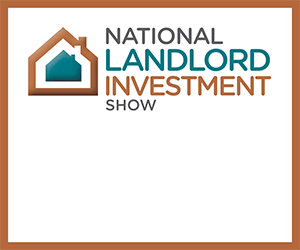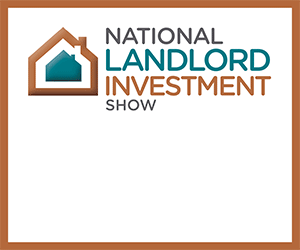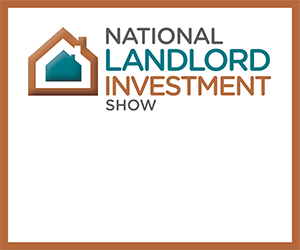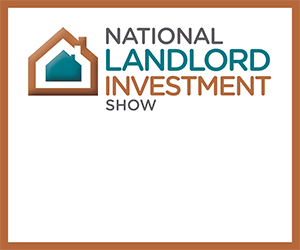Welcome to your essential Buy-to-Let Property Glossary, which contains all the key terms and industry jargon to help you on the road to a successful property investment.
For landlords and investors alike, the intricacies of the UK property market demand clarity. Whether you’re a first-time investor, an experienced portfolio holder, or investing from overseas, this exclusive glossary breaks down essential industry terms to enhance your understanding and to make truly informed investment decisions.
Your Essential Buy-to-Let Property Glossary
To help you navigate our comprehensive Buy-to-Let, we have broken common terms down into three sections, which are: Property Market and Investment Terms, Compliance and Property Management, and Taxation and Finances.
Buy-to-Let Property Glossary: Property Market and Investment Terms
| A | Asset
An asset is something you own that has economic value and can potentially generate income or an increase in value. For landlords, a Buy-to-Let property is classed as an asset. |
| B | Below Market Value (BMV)
Below Market Value refers to a property which is priced or for sale at a price lower than its current market value. BMV properties are particularly attractive for investors as they can offer an immediate equity gain. However, investors should always do their due diligence to understand why the property is priced BMV. Build to Rent (BTR) Build to Rent is a type of residential development specifically designed and built for the purpose of renting, rather than selling individual units. These new-build developments are often professionally managed and sometimes offer amenities not typically found in individual landlord properties, like a gym, concierge, workspaces, and more. Buy-to-Let (BTL) Buy-to-Let property, or BTL, refers to the practice of buying a property specifically with the intention of renting it out to tenants to generate rental income and potentially capital gains. |
| C | Capital Appreciation
Capital Appreciation/Capital Gains/Capital Growth are all terms that refer to the rise in value of an asset over time. Capital appreciation is one of the biggest draws for Buy-to-Let investors, who often hope for both rental income and capital growth of their property. Completion When buying a rental property in the UK, the final stage of the purchase, when all legal formalities are concluded, funds are transferred, and the buyer takes ownership of the property, is referred to as Completion. Buyers are given a Completion Date by their solicitor, and this date is outlined within the Contracts. |
| D | Developer
A developer refers to a company or individual who undertakes construction projects, often building new residential or commercial properties for sale or rent. Landlords may purchase properties directly from developers, through estate agents, or consultancies. Due Diligence This is the process of thorough investigation and verification that individuals should undertake before committing to a BTL property purchase. Some examples include conducting market analysis to compare property values, rents, and the type of tenants to whom the property will appeal. Thorough due diligence will help landlords weigh up the risks and rewards of investing in a particular property, location, or asset class. |
| E | Equity
This term is the difference between the current market value of a property and the amount of any outstanding mortgage or loans secured against it. It represents the owner’s stake in the property, and the amount of equity can be positive or negative. Exchange of Contracts Exchange of Contracts, or sometimes just ‘Exchange’, is a legally binding stage in the property purchase process where both the buyer and seller (sometimes referred to as the vendor) sign contracts. Once contracts are exchanged, both parties are legally obligated to proceed with the sale. |
| F | Freehold
In the UK, residential properties are sold on Freehold or Leasehold terms. Freehold usually applies to houses rather than flats and essentially means the complete ownership of a property and the land it stands on. A freehold owner has unlimited rights to the property, subject to planning laws and other regulations. |
| G | Ground Rent
Ground Rent is a payment made by a leaseholder to a freeholder and is usually paid annually. The amount of Ground Rent will vary depending on what is outlined in the contract. Ground Rent Reform means that most new leasehold agreements will have a Peppercorn rate in place. |
| H | Houses in Multiple Occupation (HMO)
HMO is a residential property rented out by at least three people who form more than one household and share facilities like a kitchen and bathroom. Depending on the local council, there will be different rules and regulations in place, with some landlords required to register their property as a HMO with the council. Holiday Lets Former residential or purpose-built properties are rented out to holidaymakers on a short-term basis, typically for days or weeks. This can offer higher rental yields but often involves more intensive management and different legal considerations than standard ASTs. Platforms like Airbnb have increased the popularity of holiday lets across the UK.
|
| I | Interest Rates
Interest rates apply to the cost of borrowing money, expressed as a percentage of the loan amount per year. Interest rates on Buy-to-Let mortgages directly impact a landlord’s financing costs. Interest rates can go up or down and should be continuously reviewed by investors who have borrowed or are looking to borrow to finance their investment. |
| J | Joint Purchase
When two or more individuals buy a property together, they share ownership and financial responsibilities. |
| K | Key Ready
A key-ready property refers to a property that is fully completed and fully furnished to a habitable standard, and ready to welcome tenants without any further work required. |
| L | Leasehold
Leasehold properties are usually flats and refer to the ownership of a property for a fixed period (the term of the lease), but not the land it stands on. At the end of the lease, ownership reverts to the freeholder. Leasehold Reform Act is still underway, with changes expected to improve leasehold terms and legislation for property owners. Limited Company Due to taxation changes, more and more investors are buying properties through Limited Companies. A Limited Company structure has benefits for investors, including the fact that it is a type of business structure that is legally separate from its owners (the shareholders). Some landlords choose to hold their Buy-to-Let properties within a limited company for potential tax advantages. |
| M | Management Fees
For landlords seeking a hands-off investment, appointing a professional management company is one of the most common ways to operate a Buy-to-Let property investment. Management fees are charges levied by a property management company or agent for managing a landlord’s rental property and can cover finding tenants, rent collection, and property maintenance. |
| N | New-Build Property
New-Build property refers to properties that have recently been constructed and have not been previously occupied. It is a term applied to both flats and houses. |
| O | Off-plan
Off-plan property is a common way for landlords and homeowners to purchase a property before or during its construction, based on plans and specifications. This can sometimes offer a discounted off-plan price; however, there are potential risks, including the completion date running late. Investors should ensure they conduct strict due diligence when buying off-plan to ensure their funds are held securely. Overseas Investors Individuals or entities based outside the UK who invest in UK property, including Buy-to-Let. They may face specific tax and legal considerations. |
| P | Peppercorn Ground Rent
A very low or nominal amount of Ground Rent, often a symbolic payment with little real financial significance (think £1). Portfolio The collection of properties owned by a single landlord or investment entity. Purpose Built Student Accommodation (PBSA) Purpose Built Student Accommodation is a residential development specifically designed and built to house students, often offering communal facilities and managed services. |
| Q | |
| R | |
| S | |
| T | Taxes – see Taxation and Finances section. |
| U | |
| V | Vendor
In the context of a property transaction, the vendor is the seller of the property. For a prospective Buy-to-Let landlord, understanding the vendor’s position and ensuring they have a clear title to the property is a crucial part of the compliance aspect of the purchase. Void Periods A void period is the time when a rental property is unoccupied between tenancies, resulting in a loss of rental income for the landlord. |
| W | |
| X | Expat
See what we did there? Expat is short for expatriate, referring to a person living outside their native country. This might be relevant for landlords who are based overseas or who rent to tenants who are expats. |
| Y | Yield (Gross and NET)
Gross Yield: The total annual rental income as a percentage of the property’s purchase price. Net Yield: The annual rental income after deducting all property-related expenses (e.g., mortgage payments, insurance, maintenance, management fees) as a percentage of the property’s purchase price. Net yield provides a more accurate picture of profitability. |
| Z |
Buy-to-Let Property Glossary: Compliance and Property Management
| A | Assured Shorthold Tenancy (AST)
This is one of the most standard forms of tenancy agreement used in England and Wales for private residential tenancies. It grants the tenant the right to occupy the property for a fixed term, after which the landlord typically has the right to regain possession whilst adhering to the specific legal process. |
| B | Building Regulations
Building Regulations are a set of standards for the design and construction of buildings to ensure the health and safety of people in and around them. Landlords are responsible for ensuring their properties meet relevant regulations, especially after renovations the correct legal steps and notice periods. |
| C | Check-in/Check-out Report (Inventory)
An Inventory is a comprehensive record of the property’s condition at the beginning and end of a tenancy. Crucial for fair deposit deductions and compliance with deposit protection schemes. |
| D | Deposit Protection Scheme (DPS)
Landlords in England and Wales must protect tenants’ deposits in one of the three government-approved schemes. Compliance involves registering the deposit and providing the tenant with the required information. |
| E | Eviction Process (Section 8 & Section 21 Notices)
The legal procedures a landlord must follow to regain possession of their property. Section 8 is used when the tenant has breached the tenancy agreement, while Section 21 can be used at the end of a fixed term (with specific conditions). Compliance requires following the correct legal steps and notice periods. Energy Performance Certificate (EPC) An Energy Performance Certificate (EPC) indicates the energy efficiency of a property on a scale of A (most efficient) to G (least efficient). It is a legal requirement for landlords in the UK to have a valid EPC in place before marketing a property for rent. The certificate also provides recommendations on how the property’s energy efficiency could be improved. Compliance with regulations dictates that a property being let must generally have an EPC rating of E or above. This falls under the landlord’s legal obligations to ensure the property meets certain standards before and during a tenancy. From a property management perspective, a higher EPC rating can be attractive to tenants due to potentially lower energy bills. |
| F | Fire Safety Regulations
Landlords have a legal responsibility to ensure their properties are safe from fire, including providing working smoke alarms, carbon monoxide detectors (where necessary), and ensuring escape routes are clear. They may require annual checks by an appointed professional. |
| G | Gas Safety Certificate
For those renting a property with gas appliances, an annual inspection by a Gas Safe registered engineer is mandatory, and a copy of the certificate must be provided to the tenant and kept for your records. |
| H | |
| I | Insurance
As a landlord, protecting your investment property is crucial, and that’s where landlord insurance comes in. It’s a specialised type of insurance designed to cover the specific risks associated with renting out a property, offering broader protection than standard home insurance. |
| J | |
| K | Key Holding (Tenant Permission)
While landlords may have access to the property, they generally need to provide notice and obtain the tenant’s permission to enter, respecting their right to quiet enjoyment. |
| L | Landlord Investment Show
Keep up-to-date with what’s going on in the property industry and get access to expert talks and panel debates by signing up for your local Landlord Investment Show. |
| M | |
| N | Notice Periods (for Eviction)
A legally required amount of time a landlord must give a tenant when serving an eviction notice (Section 8 or Section 21). Compliance requires adhering to these specific timeframes. |
| O | |
| P | Pets and Tenancies
Changes to renters’ rights mean that landlords cannot say a blanket ‘no’ to pet requests. Property Management Software Digital tools that help landlords and property managers streamline various tasks, including rent collection, tenant communication, maintenance scheduling, and compliance tracking. |
| Q | Quiet Enjoyment Clause
A standard clause in tenancy agreements that ensures the tenant has the right to live in the property without unreasonable interference from the landlord. |
| R | Renters’ Rights Bill
Legislation aimed at strengthening the rights of tenants can indirectly impact a landlord’s financial responsibilities and potential costs. Right to Rent Checks Landlords in England are legally required to check the immigration status of prospective tenants to ensure they have the right to rent property in the UK. Failure to do so can result in penalties. |
| S | |
| T | Tenant Referencing
Tenant referencing is the process of verifying the background and suitability of prospective tenants, including their financial history and previous tenancy records. This is a key property management practice to mitigate risk. |
| U | Utilities (Gas, Electric, Water)
The essential services are supplied to a property. The responsibility for paying for these can lie with the landlord or the tenant, depending on the tenancy agreement. |
| V | |
| W | Wear and Tear (Fair)
The natural deterioration of a property resulting from normal use by tenants over time. Landlords cannot usually deduct costs for fair wear and tear from a tenant’s deposit. |
| X | Exit Strategy
A landlord’s plan for eventually selling or otherwise disposing of the property. This can influence property management decisions regarding tenancy lengths and property condition. Forward tax planning can also help landlords improve the tax efficiency of their exit strategy. |
| Y | |
| Z | Zero Tolerance Policy
A strict approach to enforcing specific terms of the tenancy agreement, often related to tenant conduct or property care. Consistent enforcement is a key aspect of property management and compliance with the agreement. |
Buy-to-Let Property Glossary: Taxation and Finances
| A | Accounting
For landlords, good accounting practices are essential for tracking income and expenses, calculating taxable profits, and helping to maintain their property business. Allowable Expenses Costs that landlords can deduct from their rental income before calculating their taxable profit. These can include mortgage interest (with restrictions), repairs and maintenance, insurance, letting agent fees, and certain utility costs. |
| B | Buy-to-Let Mortgages
Specific types of mortgages are designed for individuals purchasing property with the intention of renting it out. These often have different interest rates, fees, and lending criteria compared to residential mortgages, reflecting the investment nature of the property.
|
| C | Capital Gains Tax (CGT)
Capital Gains Tax (CGT) is a tax payable on the profit (capital appreciation) made when selling or disposing of an asset that has increased in value; most landlords are likely liable for CGT when they sell their Buy-to-Let property; however, the rate payable will vary depending on several factors. Council Tax Council Tax is a local tax levied by local authorities on residential properties to fund local services. The responsibility for paying Council Tax typically falls on the tenant, but landlords need to understand its implications, especially during void periods. There are certain exemptions in place for properties which are not occupied. However, they vary depending on the council. If you’re not sure, contact your local authority for more information. |
| D | |
| E | |
| F | Finance Costs
Expenses incurred in financing a Buy-to-Let property, primarily mortgage interest. |
| G | Gearing (Leveraging)
The extent to which a property investment is financed by borrowing (e.g., a mortgage) rather than the investor’s own capital. Higher gearing can amplify both potential returns and potential losses. |
| H | Higher-Rate Taxpayer
An individual whose taxable income falls above a certain threshold and is therefore subject to a higher rate of income tax. This is relevant for how rental income and mortgage interest relief are taxed. |
| I | Income Tax (on Rental Income)
Tax payable on the profit a landlord makes from renting out their property after deducting allowable expenses. The rate of income tax depends on the landlord’s overall income tax bracket. |
| J | |
| K | |
| L | Loan-to-Value (LTV)
The ratio of the mortgage amount to the property’s value is expressed as a percentage. A higher LTV generally means a higher risk for the lender and potentially higher interest rates. |
| M | |
| N | Net Rental Income
The total rental income received minus all allowable expenses. This is the profit figure on which income tax is calculated. |
| O | |
| P | Personal Allowance
The amount of income an individual can earn each tax year without paying income tax. This applies to rental income as part of an individual’s total taxable income. Tax changes are common, so it’s a good idea to seek professional tax advice when determining your tax obligations. |
| Q | |
| R | Rent Arrears
Unpaid rent owed by a tenant who has fallen behind on their rental payments. |
| S | Stamp Duty Land Tax (SDLT)
Stamp Duty tax is payable on property purchases in England and Northern Ireland above a certain threshold. Buy-to-Let investors often face higher SDLT rates than owner-occupiers. Check out our 2025 Stamp Duty Guide. |
| T | Tax Year
The period for which UK taxes are calculated runs from April 6th of one year to April 5th of the next. |
| U | Underwriting (Mortgage)
The process by which a lender assesses the risk of lending money to a borrower for a mortgage, taking into account factors like income, credit history, and the property’s value. |
| V | Variable Rate Mortgage
A mortgage with an interest rate that can fluctuate over time, often linked to a base rate. This introduces an element of uncertainty in financing costs. |
| W | |
| X | Exit Fees (Mortgage)
Charges that a lender may apply if a borrower repays their mortgage early or switches to another lender within a specific period. |
| Y | |
| Z |
We hope you’ve enjoyed our complete Buy-to-Let Property Glossary and that it’s helped you on your investment journey.
Unlock your free LIS Membership
Get the latest property industry news and expert insights by signing up for your free LIS Membership. Join our growing community of Buy-to-Let investors and landlords today!



























Comments